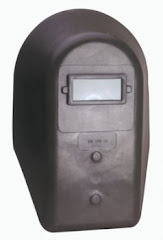 Copyright 2012-2013 World Customs Organization
Copyright 2012-2013 World Customs Organization
martes, 7 de mayo de 2013
Harmonized System Workshop in Georgia
The Georgian Revenue Service has been working hard over the past several years to ensure sustained progress in the area of Customs reform and modernisation, aspiring to become one of the most efficient administrations using business-friendly processes and procedures as well as state-of-the-art revenue collection methods. Implementation of international standards has been an important part of this endeavour : one of the recent developments was Georgia’s accession to the Harmonized System Convention in 2009, as well as implementation of HS 2012 amendments. To build on this momentum, and recognising that the capacity of Customs to classify commodities in the correct and uniform manner is one of the key prerequisites of a robust and well-functioning revenue collection system, the Georgian Customs decided to revisit its work in this area by organising a national multipurpose Workshop on the HS.
The Workshop took place in Tbilisi, from 22 to 26 April 2013, and addressed a wide range of HS-related matters, seeking to achieve a holistic view of the subject matter. Participants deliberated on a number of issues related to the HS Convention, such as the rights and obligations of HS Contracting Parties, best practices for organising tariff classification work, advance tariff rulings, and the fundamental principles and practicalities of HS classification. What’s more, the Workshop provided an opportunity for a thorough examination of individual classification issues raised by Georgian Customs.
The Workshop was organised jointly by the WCO and the Georgian Revenue Service, with the support of the Eurocustoms fund. It gathered officers from several units concerned with commodity classification matters. The event was conducted entirely in Russian – one of the languages spoken in Georgia – which contributed to a smooth flow of communication without language barriers and active participation by the audience. The implementation of the results of the Workshop will contribute to continued modernisation effort of Georgia and lead to establishing of a tariff classification infrastructure in keeping with the best practices recommended by the WCO.
 Copyright 2012-2013 World Customs Organization
Copyright 2012-2013 World Customs Organization
 Copyright 2012-2013 World Customs Organization
Copyright 2012-2013 World Customs Organization
martes, 9 de abril de 2013
LIBRO CLASIFICACIÓN ARANCELARIA DE PRODUCTOS SIDERÚRGICOS EN EL SISTEMA ARMONIZADO DE DESIGNACIÓN Y CODIFICACIÓN DE MERCANCÍAS AUTOR: L. C. E. HERIBERTO RÍOS PORTILLO.
 Escribir un libro no es una tarea fácil y más si se trata de un tema tan basto, técnico y científico como lo es la Clasificación Arancelaria. Fueron horas de intenso estudio y tratar de conseguir fuentes oficiales relacionadas con el tema fue más complicado. Mi objetivo fue plasmar ciertos aspectos técnicos en un libro tipo manual practico y sencillo de manera que al lector le sirva como guía y referencia en la practica a la hora de verificar los productos de la industria siderúrgica, claro que para llegar a ese objetivo primero fue necesario estudiar la parte relacionada con la aduana y el comercio exterior que como ya sabemos son trabajos muy estresantes y agotadores.
¿POR QUÉ UN LIBRO ENFOCADO A LA SECCIÓN XV?
La Sección XV comprende los productos de la industria siderúrgica, donde nos hemos enfocado al acero. ¿Por qué? En mi opinión las Secciones más importantes dentro de la nomenclatura del Sistema Armonizado son la Sección VI (Industria Química), Sección XI (Industria Textil), Sección XV (Industria Siderúrgica) y la Sección XVI (Maquinaria). Estas Secciones son de las más complicadas a la hora de clasificar un producto y también representan un alto volumen de comercio.
Prácticamente el acero esta presente en toda la sociedad, por ejemplo en los hospitales en forma de instrumentos de cirugía y equipos médicos, en las tuberías que hacen posible el sistema de agua potable y drenaje, en la agricultura con herramientas y maquinaria, y en la construcción de edificios y grandes súper estructuras como puentes y torres. Por lo tanto no cabe duda que todos los países necesitan del acero.
El libro esta pronto a publicarse, si deseas informacion sobre como adquirirlo manda correo a hrios_sa@hotmail.com para apartar tu copia.
ESTRUCTURA DEL LIBRO
INTRODUCCIÓN
Capitulo 1 ANTECEDENTES HISTORICOS
1.1 Nomenclatura de Ginebra
1.2 Nomenclatura Arancelaria de Bruselas (NAB) y Nomenclatura del Consejo de Cooperación Aduanera (NCCA)
1.3 Clasificación Uniforme para el Comercio Internacional (CUCI)
1.4 Sistema Armonizado (SA) para la Designación y Codificación de Mercancías
Capitulo 2 SISTEMA ARMONIZADO (SA)
2.1 ¿Qué es el Sistema Armonizado?
2.1.1 El Comité del Sistema Armonizado
2.1.2 El Subcomité Científico
ANEXO A Reglamento para el procedimiento del Comité de Sistema Armonizado
ANEXO B Reglamento para el procedimiento del Subcomité Científico
ANEXO C Convenio Internacional sobre el Sistema Armonizado de Designación y Codificación de las Mercancías
2.1.3 Estudio sobre los artículos 3, 4 y 5 del Convenio del Sistema Armonizado de Designación y Codificación de las Mercancías.
Capitulo 3 ESTRUCTURA GENERAL DEL SISTEMA ARMONIZADO
3.1 Secciones y Capítulos del Sistema Armonizado.
3.2 Terminología del Sistema Armonizado.
3.3 Sistema de progresividad.
3.4 Elementos principales del Sistema Armonizado.
3.4.1 Reglas Generales para la Interpretación del Sistema Armonizado.
3.4.2 Reglas complementarias
3.4.3 Notas Legales de Sección, Capitulo y Subpartida.
3.4.4 Partidas y subpartidas
Capitulo 4 PUBLICACIONES COMPLEMENTARIAS
4.1 Notas Explicativas
4.2 Compendio de Opiniones de Clasificación
4.3 Tabla de Correlación
Capitulo 5 ESTUDIO SOBRE LA APLICACIÓN DE LAS NOTAS LEGALES DE LA SECCIÓN XV METALES COMUNES Y MANUFACTURAS DE ESTOS METALES
5.1 Estudio de la Nota de Sección 1
5.2 Estudio de la Nota de Sección 2
5.3 Estudio de la Nota de Sección 3
5.4 Estudio de la Nota de Sección 4
5.5 Estudio de la Nota de Sección 5
5.6 Estudio de la Nota de Sección 6
5.7 Estudio de la Nota de Sección 7
5.8 Estudio de la Nota de Sección 8
Capitulo 6 ESTUDIO SOBRE LA APLICACIÓN DE LAS NOTAS LEGALES DEL CAPITULO 72 FUNDICIÓN, HIERRO Y ACERO
6.1 Estudio de la Nota de Capítulo 1
6.2 Estudio de la Nota de Capítulo 2
6.3 Estudio de la Nota de Capítulo 3
Capitulo 7 ESTUDIO SOBRRE LA APLICACIÓN DE LAS NOTAS DE SUBPARTIDA DEL CAPITULO 72 FUNDICIÓN, HIERRO Y ACERO
7.1 Estudio de la Nota de subpartida 1
7.2 Estudio de la Nota de subpartida 2
Capitulo 8 MERCEOLOGÍA Y CLASIFICACIÓN ARANCELARIA PARA LOS PRODUCTOS DEL ACERO
8.1 Contenido del certificado de calidad
8.2 Ferroaleaciones
8.3 Aceros laminados planos
8.3.1 Placa de acero o chapa de acero
8.3.2 Lamina rolada en caliente
8.3.3 Lamina rolada en frío
8.3.4 Aceros planos recubiertos
8.3.5 Aceros galvanizados
8.3.6 Limite elástico y resistencia a la tensión
8.3.7 Aceros revestidos de aluminio y aluminio-cinc
8.3.8 Aceros recubiertos de pintura
8.3.9 Aceros recubiertos de plomo
8.3.10 Aceros recubiertos con estaño y cromo
8.4 Aceros no planos
8.4.1 Barras macizas de acero
8.4.2 Varilla corrugada
8.4.3 Alambrón
8.4.4 Perfiles
8.4.5 Alambre
ANEXO D DIAGRAMAS DE CLASIFICACIÓN ARANCELARIA PARA LOS PRODUCTOS DEL CAPITULO 72
8.5 Tubos de acero
8.6 Estudio sobre artículos de la partida 73.18
BIBLIOGRAFIA
Escribir un libro no es una tarea fácil y más si se trata de un tema tan basto, técnico y científico como lo es la Clasificación Arancelaria. Fueron horas de intenso estudio y tratar de conseguir fuentes oficiales relacionadas con el tema fue más complicado. Mi objetivo fue plasmar ciertos aspectos técnicos en un libro tipo manual practico y sencillo de manera que al lector le sirva como guía y referencia en la practica a la hora de verificar los productos de la industria siderúrgica, claro que para llegar a ese objetivo primero fue necesario estudiar la parte relacionada con la aduana y el comercio exterior que como ya sabemos son trabajos muy estresantes y agotadores.
¿POR QUÉ UN LIBRO ENFOCADO A LA SECCIÓN XV?
La Sección XV comprende los productos de la industria siderúrgica, donde nos hemos enfocado al acero. ¿Por qué? En mi opinión las Secciones más importantes dentro de la nomenclatura del Sistema Armonizado son la Sección VI (Industria Química), Sección XI (Industria Textil), Sección XV (Industria Siderúrgica) y la Sección XVI (Maquinaria). Estas Secciones son de las más complicadas a la hora de clasificar un producto y también representan un alto volumen de comercio.
Prácticamente el acero esta presente en toda la sociedad, por ejemplo en los hospitales en forma de instrumentos de cirugía y equipos médicos, en las tuberías que hacen posible el sistema de agua potable y drenaje, en la agricultura con herramientas y maquinaria, y en la construcción de edificios y grandes súper estructuras como puentes y torres. Por lo tanto no cabe duda que todos los países necesitan del acero.
El libro esta pronto a publicarse, si deseas informacion sobre como adquirirlo manda correo a hrios_sa@hotmail.com para apartar tu copia.
ESTRUCTURA DEL LIBRO
INTRODUCCIÓN
Capitulo 1 ANTECEDENTES HISTORICOS
1.1 Nomenclatura de Ginebra
1.2 Nomenclatura Arancelaria de Bruselas (NAB) y Nomenclatura del Consejo de Cooperación Aduanera (NCCA)
1.3 Clasificación Uniforme para el Comercio Internacional (CUCI)
1.4 Sistema Armonizado (SA) para la Designación y Codificación de Mercancías
Capitulo 2 SISTEMA ARMONIZADO (SA)
2.1 ¿Qué es el Sistema Armonizado?
2.1.1 El Comité del Sistema Armonizado
2.1.2 El Subcomité Científico
ANEXO A Reglamento para el procedimiento del Comité de Sistema Armonizado
ANEXO B Reglamento para el procedimiento del Subcomité Científico
ANEXO C Convenio Internacional sobre el Sistema Armonizado de Designación y Codificación de las Mercancías
2.1.3 Estudio sobre los artículos 3, 4 y 5 del Convenio del Sistema Armonizado de Designación y Codificación de las Mercancías.
Capitulo 3 ESTRUCTURA GENERAL DEL SISTEMA ARMONIZADO
3.1 Secciones y Capítulos del Sistema Armonizado.
3.2 Terminología del Sistema Armonizado.
3.3 Sistema de progresividad.
3.4 Elementos principales del Sistema Armonizado.
3.4.1 Reglas Generales para la Interpretación del Sistema Armonizado.
3.4.2 Reglas complementarias
3.4.3 Notas Legales de Sección, Capitulo y Subpartida.
3.4.4 Partidas y subpartidas
Capitulo 4 PUBLICACIONES COMPLEMENTARIAS
4.1 Notas Explicativas
4.2 Compendio de Opiniones de Clasificación
4.3 Tabla de Correlación
Capitulo 5 ESTUDIO SOBRE LA APLICACIÓN DE LAS NOTAS LEGALES DE LA SECCIÓN XV METALES COMUNES Y MANUFACTURAS DE ESTOS METALES
5.1 Estudio de la Nota de Sección 1
5.2 Estudio de la Nota de Sección 2
5.3 Estudio de la Nota de Sección 3
5.4 Estudio de la Nota de Sección 4
5.5 Estudio de la Nota de Sección 5
5.6 Estudio de la Nota de Sección 6
5.7 Estudio de la Nota de Sección 7
5.8 Estudio de la Nota de Sección 8
Capitulo 6 ESTUDIO SOBRE LA APLICACIÓN DE LAS NOTAS LEGALES DEL CAPITULO 72 FUNDICIÓN, HIERRO Y ACERO
6.1 Estudio de la Nota de Capítulo 1
6.2 Estudio de la Nota de Capítulo 2
6.3 Estudio de la Nota de Capítulo 3
Capitulo 7 ESTUDIO SOBRRE LA APLICACIÓN DE LAS NOTAS DE SUBPARTIDA DEL CAPITULO 72 FUNDICIÓN, HIERRO Y ACERO
7.1 Estudio de la Nota de subpartida 1
7.2 Estudio de la Nota de subpartida 2
Capitulo 8 MERCEOLOGÍA Y CLASIFICACIÓN ARANCELARIA PARA LOS PRODUCTOS DEL ACERO
8.1 Contenido del certificado de calidad
8.2 Ferroaleaciones
8.3 Aceros laminados planos
8.3.1 Placa de acero o chapa de acero
8.3.2 Lamina rolada en caliente
8.3.3 Lamina rolada en frío
8.3.4 Aceros planos recubiertos
8.3.5 Aceros galvanizados
8.3.6 Limite elástico y resistencia a la tensión
8.3.7 Aceros revestidos de aluminio y aluminio-cinc
8.3.8 Aceros recubiertos de pintura
8.3.9 Aceros recubiertos de plomo
8.3.10 Aceros recubiertos con estaño y cromo
8.4 Aceros no planos
8.4.1 Barras macizas de acero
8.4.2 Varilla corrugada
8.4.3 Alambrón
8.4.4 Perfiles
8.4.5 Alambre
ANEXO D DIAGRAMAS DE CLASIFICACIÓN ARANCELARIA PARA LOS PRODUCTOS DEL CAPITULO 72
8.5 Tubos de acero
8.6 Estudio sobre artículos de la partida 73.18
BIBLIOGRAFIA
viernes, 5 de abril de 2013
CLASIFICACION ARANCELARIA DE PRODUCTOS SIDERURGICOS EN EL SISTEMA ARMONIZADO DE DESIGNACION Y CODIFICACION DE MERCANCIAS
 ESTRUCTURA DEL LIBRO TERMINADA, EN UNOS MESES LES ESTARE DICIENDO CUANDO ESTARA LISTO.
INTRODUCCION
Capitulo 1 ANTECEDENTES HISTORICOS
1.1 Nomenclatura de Ginebra
1.2 Nomenclatura Arancelaria de Bruselas (NAB) y Nomenclatura del Consejo de Cooperación Aduanera (NCCA)
1.3 Clasificación Uniforme para el Comercio Internacional (CUCI)
1.4 Sistema Armonizado (SA) para la Designación y Codificación de Mercancías
Capitulo 2 SISTEMA ARMONIZADO (SA)
2.1 ¿Qué es el Sistema Armonizado?
2.1.1 El Comité del Sistema Armonizado
2.1.2 El Subcomité Científico
ANEXO A Reglamento para el procedimiento del Comité de Sistema Armonizado
ANEXO B Reglamento para el procedimiento del Subcomité Científico
ANEXO C Convenio Internacional sobre el Sistema Armonizado de Designación y Codificación de las Mercancías
2.1.3 Estudio sobre los artículos 3, 4 y 5 del Convenio del Sistema Armonizado de Designación y Codificación de las Mercancías.
Capitulo 3 ESTRUCTURA GENERAL DEL SISTEMA ARMONIZADO
3.1 Secciones y Capítulos del Sistema Armonizado.
3.2 Terminología del Sistema Armonizado.
3.3 Sistema de progresividad.
3.4 Elementos principales del Sistema Armonizado.
3.4.1 Reglas Generales para la Interpretación del Sistema Armonizado.
3.4.2 Reglas complementarias
3.4.3 Notas Legales de Sección, Capitulo y Subpartida.
3.4.4 Partidas y subpartidas
Capitulo 4 PUBLICACIONES COMPLEMENTARIAS
4.1 Notas Explicativas
4.2 Compendio de Opiniones de Clasificación
4.3 Tabla de Correlación
Capitulo 5 ESTUDIO SOBRE LA APLICACIÓN DE LAS NOTAS LEGALES DE LA SECCION XV METALES COMUNES Y MANUFACTURAS DE ESTOS METALES
5.1 Estudio de la Nota de Sección 1
5.2 Estudio de la Nota de Sección 2
5.3 Estudio de la Nota de Sección 3
5.4 Estudio de la Nota de Sección 4
5.5 Estudio de la Nota de Sección 5
5.6 Estudio de la Nota de Sección 6
5.7 Estudio de la Nota de Sección 7
5.8 Estudio de la Nota de Sección 8
Capitulo 6 ESTUDIO SOBRE LA APLICACIÓN DE LAS NOTAS LEGALES DEL CAPITULO 72 FUNDICION, HIERRO Y ACERO
6.1 Estudio de la Nota de Capítulo 1
6.2 Estudio de la Nota de Capítulo 2
6.3 Estudio de la Nota de Capítulo 3
Capitulo 7 ESTUDIO SOBRRE LA APLICACIÓN DE LAS NOTAS DE SUBPARTIDA DEL CAPITULO 72 FUNDICION, HIERRO Y ACERO
7.1 Estudio de la Nota de subpartida 1
7.2 Estudio de la Nota de subpartida 2
Capitulo 8 MERCEOLOGIA Y CLASIFICACION ARANCELARIA PARA LOS PRODUCTOS DEL ACERO
8.1 Contenido del certificado de calidad
8.2 Ferroaleaciones
8.3 Aceros laminados planos
8.3.1 Placa de acero o chapa de acero
8.3.2 Lamina rolada en caliente
8.3.3 Lamina rolada en frío
8.3.4 Aceros planos recubiertos
8.3.5 Aceros galvanizados
8.3.6 Limite elástico y resistencia a la tensión
8.3.7 Aceros revestidos de aluminio y aluminio-cinc
8.3.8 Aceros recubiertos de pintura
8.3.9 Aceros recubiertos de plomo
8.3.10 Aceros recubiertos con estaño y cromo
8.4 Aceros no planos
8.4.1 Barras macizas de acero
8.4.2 Varilla corrugada
8.4.3 Alambrón
8.4.4 Perfiles
8.4.5 Alambre
ANEXO D DIAGRAMAS DE CLASIFICACION ARANCELARIA PARA LOS PRODUCTOS DEL CAPITULO 72
8.5 Tubos de acero
8.6 Estudio sobre artículos de la partida 73.18
BIBLIOGRAFIA
ESTRUCTURA DEL LIBRO TERMINADA, EN UNOS MESES LES ESTARE DICIENDO CUANDO ESTARA LISTO.
INTRODUCCION
Capitulo 1 ANTECEDENTES HISTORICOS
1.1 Nomenclatura de Ginebra
1.2 Nomenclatura Arancelaria de Bruselas (NAB) y Nomenclatura del Consejo de Cooperación Aduanera (NCCA)
1.3 Clasificación Uniforme para el Comercio Internacional (CUCI)
1.4 Sistema Armonizado (SA) para la Designación y Codificación de Mercancías
Capitulo 2 SISTEMA ARMONIZADO (SA)
2.1 ¿Qué es el Sistema Armonizado?
2.1.1 El Comité del Sistema Armonizado
2.1.2 El Subcomité Científico
ANEXO A Reglamento para el procedimiento del Comité de Sistema Armonizado
ANEXO B Reglamento para el procedimiento del Subcomité Científico
ANEXO C Convenio Internacional sobre el Sistema Armonizado de Designación y Codificación de las Mercancías
2.1.3 Estudio sobre los artículos 3, 4 y 5 del Convenio del Sistema Armonizado de Designación y Codificación de las Mercancías.
Capitulo 3 ESTRUCTURA GENERAL DEL SISTEMA ARMONIZADO
3.1 Secciones y Capítulos del Sistema Armonizado.
3.2 Terminología del Sistema Armonizado.
3.3 Sistema de progresividad.
3.4 Elementos principales del Sistema Armonizado.
3.4.1 Reglas Generales para la Interpretación del Sistema Armonizado.
3.4.2 Reglas complementarias
3.4.3 Notas Legales de Sección, Capitulo y Subpartida.
3.4.4 Partidas y subpartidas
Capitulo 4 PUBLICACIONES COMPLEMENTARIAS
4.1 Notas Explicativas
4.2 Compendio de Opiniones de Clasificación
4.3 Tabla de Correlación
Capitulo 5 ESTUDIO SOBRE LA APLICACIÓN DE LAS NOTAS LEGALES DE LA SECCION XV METALES COMUNES Y MANUFACTURAS DE ESTOS METALES
5.1 Estudio de la Nota de Sección 1
5.2 Estudio de la Nota de Sección 2
5.3 Estudio de la Nota de Sección 3
5.4 Estudio de la Nota de Sección 4
5.5 Estudio de la Nota de Sección 5
5.6 Estudio de la Nota de Sección 6
5.7 Estudio de la Nota de Sección 7
5.8 Estudio de la Nota de Sección 8
Capitulo 6 ESTUDIO SOBRE LA APLICACIÓN DE LAS NOTAS LEGALES DEL CAPITULO 72 FUNDICION, HIERRO Y ACERO
6.1 Estudio de la Nota de Capítulo 1
6.2 Estudio de la Nota de Capítulo 2
6.3 Estudio de la Nota de Capítulo 3
Capitulo 7 ESTUDIO SOBRRE LA APLICACIÓN DE LAS NOTAS DE SUBPARTIDA DEL CAPITULO 72 FUNDICION, HIERRO Y ACERO
7.1 Estudio de la Nota de subpartida 1
7.2 Estudio de la Nota de subpartida 2
Capitulo 8 MERCEOLOGIA Y CLASIFICACION ARANCELARIA PARA LOS PRODUCTOS DEL ACERO
8.1 Contenido del certificado de calidad
8.2 Ferroaleaciones
8.3 Aceros laminados planos
8.3.1 Placa de acero o chapa de acero
8.3.2 Lamina rolada en caliente
8.3.3 Lamina rolada en frío
8.3.4 Aceros planos recubiertos
8.3.5 Aceros galvanizados
8.3.6 Limite elástico y resistencia a la tensión
8.3.7 Aceros revestidos de aluminio y aluminio-cinc
8.3.8 Aceros recubiertos de pintura
8.3.9 Aceros recubiertos de plomo
8.3.10 Aceros recubiertos con estaño y cromo
8.4 Aceros no planos
8.4.1 Barras macizas de acero
8.4.2 Varilla corrugada
8.4.3 Alambrón
8.4.4 Perfiles
8.4.5 Alambre
ANEXO D DIAGRAMAS DE CLASIFICACION ARANCELARIA PARA LOS PRODUCTOS DEL CAPITULO 72
8.5 Tubos de acero
8.6 Estudio sobre artículos de la partida 73.18
BIBLIOGRAFIA
miércoles, 14 de noviembre de 2012
JUNTAS DE CAUCHO/CORCHO ADUANA USA
On August 6, 1992, this office issued you Headquarters Ruling Letter (HRL) 087392 in which weclassified:Gasket material made of a cork/rubber composite material in subheading 4504.10.1000, HarmonizedTariff Schedule of the United States (HTSUS);Finished gaskets of the above material in subheading 8409.91.9190, HTSUS, (currently provided for inthe 1998 HTSUS under subheading 8409.91.1080) which provides for "[P]arts suitable for use solely orprincipally with the engines of heading 8407 or 8408: Other: Suitable for use solely or principally withspark-ignition internal combustion piston engines (including rotary engines): Other:For vehicles ofsubheading 8701.20, or heading 8702, 8703 or 8704" or, if for compression-ignitioninternal combustion engines of heading 8408, in subheading 8409.91.9990; andFinished gaskets of the above materialfor use in automotive transmissions in subheading 4504.90.2000(currently provided for in the 1998 HTSUS under subheading 4504.90.0000).Upon further consideration, HRL 087392 is deemed to be in error as regards the classification of thecork/rubber gasket material and the finished gaskets.Pursuant to section 625(c)(1), Tariff Act of 1930 (19 U.S.C.1625(c)(1)), as amended by section 623 of Title VI (Customs Modernization) of the North AmericanFree Trade Agreement Implementation Act, Pub. L. 103-182, 107 Stat. 2057, 2186 (1993), notice ofthe proposed revocation of HQ 087392 was published on October 28, 1998, in the Customs Bulletin,Volume 32, Number 43.
FACTS:Two classes of merchandise are the subject of this revocation:finished gaskets and gasket material insheet or strip form. Both are made of a cork and rubber composite material. The composition of thematerial varies from 60 to 80 percent by weight rubber and 20 to 40 percent by weight cork. The corkand rubber are combined in Portugal and formed into blocks. The blocks are shipped to Canada wherethe importer slices the large pieces into sheets or elongated strips. Some of this material is shipped into theUnited States in sheet or strip form; some is cut to finalshape as gaskets and then imported.
ISSUES:What is the proper classification of the composite cork/rubber gasket material?What is the proper classification of the finished gaskets?LAW AND ANALYSIS:
Classification of merchandise under the HTSUS is governed by the GeneralRules of Interpretation(GRI's). GRI 1 provides that classification shall be determined according to the terms of the headings andany relative section or chapter notes. Merchandise that cannot be classified in accordance with GRI 1 is tobe classified in accordance with subsequent GRI's, taken in order.Classification of the Gasket MaterialIn HRL 087392, this office determined that the subject cork/rubber composite material was classifiable inheading 4504, HTSUS, which provides for "[A]gglomerated cork (with or without a binding substance)and articles of agglomerated cork," by application of GRI 1. In support of this classification, it was notedthat the heading text described the subject material and the Explanatory Note to heading 4504, at page717, described agglomerated cork with a binder of vulcanized rubber.Upon further consideration of this matter, Customs has determined that the rubber component of thesubject material is described by heading 4008, HTSUS, which provides for "[P]lates, sheets, strip, rodsand profile shapes, of vulcanized rubber other than hard rubber." As the subject material is described inequally specific terms by headings 4008 and 4504, HTSUS, classification is pursuant to a GRI 3(b)analysis.GRI 3(b) provides:"(b) Mixtures, composite goods consisting of different materials or made up of different components, andgoods put up in sets for retailsale, which cannot be classified by reference to 3(a), shall be classified as ifthey consisted of the material or component which gives them their essential character, insofar as thiscriterion is applicable."Explanatory Note (EN) VIII to GRI 3(b) states:"[T]he factor which determines essential character will vary as between different kinds of goods. It may,for example, be determined by the nature of the material or component, its bulk, quantity, weight or value,or by the role of a constituent material in relation to the use of the goods."In applying these criteria to the material at issue, it is noted that the rubber component is of greater weightand value than the cork component. Moreover, the rubber component contributes an important function tothe material's end use as a gasket. A gasket is a seal or packing used to make a pipe or other joint air- orfluid-tight. As vulcanized rubber is compressible, it enhances a gasket's ability to maintain a seal whenjoints compress or expand. Vulcanized rubber is also impermeable to gas and liquid, thereby contributingto a gasket's ability to maintain a seal.
Based on the foregoing, Customs views the rubber component as imparting the essential character to thecomposite material. Accordingly, classification is proper in subheading 4008, HTSUS.Classification of the Finished GasketsIn HQ 087392, Customs determined that the gaskets for use in automotive engines were classifiable inheading 8409, HTSUS. Heading 8409 falls within Section XVI of the Nomenclature. Legal Note 1(a) toSection XVI excludes "articles of a kind used in machinery ... of vulcanized rubber other than hard rubber(heading 40.16)." As these gaskets are for use in machinery and are made of vulcanized rubber,classification in heading 8409, HTSUS, is precluded by direction of the Section Note.Similarly, as the gaskets for use in automotive transmissions are made of vulcanized rubber, they are notclassifiable as articles of agglomerated cork in heading 4504, HTSUS.The gaskets at issue in HRL 087392 are made of vulcanized rubber and are thereby classifiable insubheading 4016.93.1050, HTSUS, which provides for "[O]ther articles of vulcanized rubber, other than of a kind used in the automotive goods of chapter 87... Other...
HOLDING:HRL 087932 is hereby revoked.The gasket material is classifiable in subheading 4008.10.0000, HTSUS, which provides for "[P]lates,sheets, strip, rods and profile shapes, of vulcanized rubber other than hard rubber: of noncellular rubber:plates, sheets and strip," dutiable at a rate of 0.7 percent ad valorem.The finished gaskets are classifiable in subheading 4016.93.1050, HTSUS, which provides for "[O]therarticles of vulcanized rubber, other than hard rubber: Other: Gaskets, washers and other seals: Of a kindused in the automotive goods of chapter 87... Other," dutiable at a rate of 2.7 percent ad valorem.In accordance with 19 U.S.C. 1625(c)(1), this ruling will become effective 60 days after its publication inthe Customs Bulletin. Publication of rulings or decisions pursuant to 19 U.S.C. 1625(c)(1) does notconstitute a change of practice or position in accordance with section 177.10(c)(1), Customs Regulations(19 CFR 177.10(c)(1))
EMPRESAS PORTURIAS DE IQUIQUE - ITI Y EPI PRESENTARAN ESTUDIO DE VENTAJAS PARA EL COMERCIO EXTERIOR BOLIVIANO
“La Directora Técnica de la Cámara Nacional de Despachantes de Aduana - CNDA, Alexina Flores Gallegos y el Asesor de ésta dependencia, José Endara Mollinedo, son autores y disertantes del estudio que se presentará en la CAINCO”
El jueves 15 de noviembre a horas 17:30 en el Salón de Convenciones del Centro Empresarial de las Torres CAINCO de la ciudad de Santa Cruz, la empresa Puerto de Iquique Terminal Internacional (ITI), la Empresa Portuaria de Iquique (EPI) y el Instituto Boliviano de Comercio Exterior (IBCE), organizan el Seminario “Derribando Mitos: Iquique una opción real para el Comercio Exterior Boliviano”.
La actividad estará basada en el estudio “Análisis Comparativo para las exportaciones bolivianas a través de los Puertos de Iquique y Arica” realizado a solicitud de Iquique Terminal Internacional (ITI) por la Directora Técnica de la Cámara Nacional de Despachantes de Aduanas, Ing Alexina Flores Gallegos y el Asesor de esta Dirección Lic. José Endará Mollinedo quienes, en base a su vasta experiencia y conocimiento en el área del comercio exterior y las operaciones aduaneras, elaboraron el documento que plantea las ventajas en tiempos y costos para las exportaciones bolivianas a través del Puerto de Iquique.
El estudio realizado por funcionarios de la Cámara Nacional de Despachantes de Aduanas y el Instituto de Comercio Exterior y Aduanas “Angel Rasmussen”, se constituye en la primera oferta de servicios exportables de la entidad representante de los Despachantes de Aduana de Bolivia, que es el sector experto del Comercio Exterior de Bolivia y quienes garantizan al Estado Plurinacional de Bolivia el correcto pago de tributos aduaneros y el cumplimiento de la normativa legal vigente.
Quienes deseen participar de este Seminario de significativa Importancia comercial, pueden realizar la reserva de su participación comunicándose al teléfono 336-2230.
miércoles, 31 de octubre de 2012
Common Customs Tariff - Tariff headings - Product containing 76.6% protein, 5% lactose and 2.1% fat, without detectable sugar, obtained by ultrafiltration - Classification under subheading 0404 90 33 of the Combined Nomenclature
Summary
The Common Customs Tariff must be interpreted as meaning that a product described as "75% whey protein concentrate", consisting as to 76.6% of protein, 5% of lactose and 2.1% of milk fat, without detectable sugar, obtained by the ultrafiltration of whey, must be classified under subheading 0404 90 33 of the Common Customs Tariff as "products consisting of natural milk constituents ..." in the version of that subheading in the annex to Commission Regulation No 3174/88 of 21 September 1988 amending Annex I to Council Regulation (EEC) No 2658/87 on the tariff and statistical nomenclature and on the Common Customs Tariff. Such a product, which no longer displays the essential characteristics of whey, cannot be classified under subheading 0404 10 as "whey, whether or not concentrated ... not containing added sugar or other sweetening matter".
Parties
In Case C-120/90,
REFERENCE to the Court under Article 177 of the EEC Treaty by the Bundesfinanzhof (Federal Finance Court) for a preliminary ruling in the proceedings pending before that Court between
Ludwig Post GmbH
and
Oberfinanzdirektion Muenchen (Regional Finance Directorate, Munich),
on the interpretation of subheadings 0404 10 11, "whey, whether or not concentrated ... not containing added sugar or other sweetening matter" and 0404 90 33, "products consisting of natural milk constituents ... not elsewhere specified or included, not containing added sugar or other sweetening matter, of a protein content by weight exceeding 42% and of a fat content by weight exceeding 1.5% but not exceeding 27%", of the Common Customs Tariff in the version annexed to Commission Regulation (EEC) No 3174/88 of 21 September 1988 amending Annex I to Council Regulation (EEC) No 2658/87 on the tariff and statistical nomenclature and on the Common Customs Tariff (Official Journal 1988 L 298, p. 1),
THE COURT (Second Chamber),
composed of: T.F. O' Higgins, President of the Chamber, G.F. Mancini and F.A. Schockweiler, Judges,
Advocate General: G. Tesauro,
Registrar: D. Louterman, Principal Administrator,
after considering the written observations submitted on behalf of:
Ludwig Post GmbH, by Barbara Festge, Rechtsanwalt, Hamburg,
The French Government, by Philippe Pouzoulet, Sous-Directeur des Affaires Juridiques, Ministry for Foreign Affairs, and Hélène Duchene, Secrétaire des Affaires Etrangères, in the same Ministry,
The Commission of the European Communities, by Jorn Sack, Legal Adviser, acting as Agent,
having regard to the Report for the Hearing,
after hearing oral argument presented on behalf of Ludwig Post GmbH and the Commission at the hearing on 7 March 1991,
after hearing the Opinion of the Advocate General at the sitting on the same day,
gives the following
Judgment
Grounds
1 By order of 13 March 1990, which was received at the Court Registry on 26 April 1990, the Bundesfinanzhof referred to the Court for a preliminary ruling under Article 177 of the EEC Treaty a question on the interpretation of subheadings 0404 10 11, "whey, whether or not concentrated ... not containing added sugar or other sweetening matter" and 0404 90 33, "products consisting of natural milk constituents ... not elsewhere specified or included, not containing added sugar or other sweetening matter, of a protein content by weight exceeding 42% and of a fat content by weight exceeding 1.5% but not exceeding 27%", of the Common Customs Tariff in the version annexed to Commission Regulation (EEC) No 3174/88 of 21 September 1988 amending Annex I to Council Regulation (EEC) No 2658/87 on the tariff and statistical nomenclature and on the Common Customs Tariff (Official Journal 1988 L 298, p. 1).
2 That question was raised in proceedings brought by Ludwig Post GmbH ("Post") against the Oberfinanzdirektion Muenchen concerning the tariff classification of a product described as "75% whey protein concentrate".
3 It is apparent from the documents in the proceedings before the national court that the product at issue is a powder obtained by ultrafiltration of whey, intended to be used in food preparations, containing 76.6% protein, 5% lactose and 2.1% fat, without detectable sugar. The proportion of lactose in the product represents only about one-fourteenth of the proportion usually contained in powdered whey.
4 In 1988, the Oberfinanzdirektion issued to Post a notice classifying the product in question under subheading 0404 90 33 of the combined nomenclature of the Common Customs Tariff (CCT). Post, on the other hand, considered that the product should be classified under subheading 0404 10 11 of the CCT.
5 In support of the claims made by it before the Bundesfinanzhof, Post maintained that it was apparent from the explanatory notes concerning heading 0404 of the CCT that the removal of part of the lactose from the product in question did not affect its character of "whey" within the meaning of subheading 0404 10 11. Post relied on scientific practice in the food industry and on trade usage.
6 In the grounds of its order for reference, the national court stated that it was inclined to share the view advocated by the Oberfinanzdirektion. In that connection, the Bundesfinanzhof referred in particular to the low lactose content of the product in question. Because of the low lactose content, the goods had lost the essential characteristics of the basic product and, as the Court held in its judgment in Case 40/88 Weber 1989 ECR 1395, could no longer qualify for the tariff classification made for that product. The product was thus not whey from which part of the lactose had been removed but modified whey with a low lactose content.
7 However, the national court considered that the interpretation of the tariff provisions in question raised certain doubts since, first, an amendment of the tariff rules was envisaged, whereby modified whey would be classified with "whey" under subheading 0404 10 of the CCT and, secondly, Post' s representative had contended that the customs authorities in certain Member States had classified powdered whey containing 75% protein and 3% lactose under subheading 0404 10 of the CCT.
8 In those circumstances, the Bundesfinanzhof stayed the proceedings and referred the following question to the Court for a preliminary ruling:
"Must the combined nomenclature (1988) be interpreted as meaning that a powder containing 76.6% milk protein, 2.1% milk fat and 5% lactose, without detectable sugar, obtained from the ultrafiltration of whey must be classified under subheading 0404 90 33 as a 'product consisting of natural milk constituents ...' or, if not, under subheading 0404 10 11 as 'whey ...' "?
9 Reference is made to the Report for the Hearing for a fuller account of the facts of the case, the procedure and the written observations submitted to the Court, which are mentioned or discussed hereinafter only in so far as is necessary for the reasoning of the Court.
10 In its question, the national court seeks essentially to determine whether the CCT must be interpreted as meaning that a product called "75% whey protein concentrate", which has been obtained by ultrafiltration of whey and contains 76.6% protein, 5% lactose and 2.1% fat, without detectable sugar must be classified under subheading 0404 90 33 of the CCT, "products consisting of natural milk constituents ..." or, being whey, should be classified under subheading 0404 10 11 of the CCT.
11 In replying to that question, it must first be pointed out that the Court has consistently held (most recently in the judgment in Case C-384/89 Tomatis [1991] ECR I-127, that, having regard to the imperatives of legal certainty and ease of verification, the decisive criterion for the tariff classification of goods must be sought generally in their objective characteristics and qualities, as defined in the headings and subheadings of the CCT, and in the notes to the sections or chapters.
12 In that connection, it must be stated in the first place that subheadings 0404 10 and 0404 90, which come under heading 0404 of the CCT, cover two groups of products described respectively as "whey, whether or not concentrated or containing added sugar or other sweetening matter" (subheading 0404 10) and "products consisting of natural milk constituents, whether or not containing added sugar or other sweetening matter, not elsewhere specified or included" (subheading 0404 90).
13 Secondly, the explanatory notes on the harmonized commodity description and coding system concerning heading 0404 of the CCT make it clear that whey is made up of the natural constituents of milk which remain after the fat and casein have been removed. Furthermore, according to those explanatory notes, part of the lactose or some minerals may be removed from the whey and it may be concentrated.
14 It is therefore necessary to compare the proportion of lactose contained in whey and in a product such as the one at issue in this case in order to determine whether the latter product can be regarded as whey from which part of the lactose has been removed, within the meaning of the explanatory notes.
15 As the national court indicated in its order for reference, the product obtained from milk, after the removal of fat and casein, normally contains 70% lactose as against 10 to 14% albumin, and that view was also confirmed by the Commission. However, it is apparent from the order for reference that the lactose content of the product in question in this case is only 5%.
16 The Court has already held that, to be classifiable under a given subheading of the CCT, a product must contain the essential constituents of the basic product in proportions which do not differ substantially from those of the basic product (see the judgment in Case 40/88 Weber, supra).
17 That requirement is not fulfilled in the case of a 75% whey protein concentrate of the type at issue in this case since, first, the proportion of lactose in that product is no more than about one-fourteenth of the proportion usually contained in powdered whey and, secondly, as a result of the removal of almost all the lactose the respective proportions of the other constituents of the whey have also changed substantially.
18 In those circumstances, such a product no longer displays the essential characteristics of the basic product "whey" and, in view of the low lactose content by comparison with the normal proportion which that constituent accounts for, the product cannot be regarded as whey from which part of the lactose has been removed, within the meaning of the explanatory notes. Accordingly, a product of that kind cannot be classified under subheading 0404 10 of the CCT.
19 On the other hand, it must be stated that, having regard to the composition of the product as described in the order for reference, a 75% whey protein concentrate of the type at issue in this case displays the objective characteristics defined in the wording of tariff subheading 0404 90 33.
20 It is a product consisting of natural constituents of milk, containing 76.6% protein, that is to say more than 42% as required by the wording of the subheading in question, whose fat content of 2.1% is within the prescribed range (between 1.5 and 27%) and for which the requirement of no added sugar or other sweeteners is satisfied by the absence of detectable sugar.
21 Accordingly, a 75% whey protein concentrate of the type at issue in this case is, for the purposes of tariff classification, a product consisting of natural constituents of milk, within the meaning of subheading 0404 90 33 of the CCT.
22 That conclusion is confirmed by the fact that the Nomenclature Committee of the Customs Cooperation Council decided, having regard to the rules as they stand at present, to classify modified whey under subheading 0404 90 of the CCT.
23 As the Commission has correctly pointed out, the fact that on that occasion the Nomenclature Committee stated that it considered that it would be desirable in the future to amend the nomenclature so as to bring natural whey and modified whey both under subheading 0404 10 of the CCT and that that view was adopted on 5 July 1989 by the Customs Cooperation Council in the form of a recommendation addressed to the Member States, which will be implemented in Community legislation with effect from 1 January 1992, is not relevant to the interpretation of the present version of the CCT.
24 Similarly, neither the alleged trade usage nor any divergent application of the rules in certain Member States can influence the interpretation of the CCT which is based on the wording of the tariff headings.
25 It follows from the foregoing considerations that it must be stated in reply to the question submitted by the national court that the CCT must be interpreted as meaning that a product described as "75% whey protein concentrate", consisting as to 76.6% of protein, 5% of lactose and 2.1% of milk fat, without detectable sugar, obtained by ultrafiltration of whey, must be classified under subheading 0404 90 33 of the CCT as "products consisting of natural milk constituents ..." in the version of that subheading in the Annex to Regulation No 3174/88.
Decision on costs
Costs
26 The costs incurred by the French Government and the Commission of the European Communities, which have submitted observations to the Court, are not recoverable. Since these proceedings are, so far as the parties to the main proceedings are concerned, in the nature of a step in the action pending before the national court, the decision on costs is a matter for that court.
Operative part
On those grounds,
THE COURT (Second Chamber),
in reply to the question submitted to it by the Bundesfinanzhof by order of 13 March 1990, hereby rules:
The Common Customs Tariff must be interpreted as meaning that a product described as "75% whey protein concentrate", consisting as to 76.6% of protein, 5% of lactose and 2.1% of milk fat, without detectable sugar, obtained by the ultrafiltration of whey, must be classified under subheading 0404 90 33 of the Common Customs Tariff as "products consisting of natural milk constituents ..." in the version of that subheading contained in the annex to Commission Regulation No 3174/88 of 21 September 1988 amending Annex I to Council Regulation (EEC) No 2658/87 on the tariff and statistical nomenclature and on the Common Customs Tariff.
martes, 2 de octubre de 2012
Una vez que se concluya la terminal intermodal de Santa Teresa en Nuevo México hacia marzo de 2014, la ferroviaria estadounidense Union Pacific anticipa que se fortalecerán las conexiones ferroviarias que atenderán a la industria manufacturera de la frontera mexicana, en especial al sector automotriz y detallista.
John E.Kaiser, Vicepresidente y director general de la división intermodal de Union Pacific, dijo que con la terminal de Santa Teresa, que se localiza en la cercanía del El Paso, Ciudad Juárez, se pretende apoyar al mercado mexicano.
El sitio de instalación del carril se encuentra justo al Oeste del aeropuerto de Santa Teresa e incluirá instalaciones de abastecimiento de combustible, edificios para cambio de tripulación, pistas de inspección locomotora, una rampa de intermodal y un patio de conmutación.
"Santa Teresa está bajo construcción, pero hemos comprado muchas propiedades podemos triplicar nuestra capacidad, para los clientes de manufactura que quisieran ampliar sus capacidades, e intencionalmente hemos comprado terrenos alrededor para poder apoyar este desarrollo".
Union Pacific planea invertir en la terminal de Santa Teresa cerca de 400 millones de dólares para el desarrollo total del proyecto, que comenzó en agosto de 2011 e incluirá instalaciones de abastecimiento de combustible, pistas de inspección para locomotoras, rampa de intermodal y un patio de interconexión.
El directivo destacó que con las terminales actuales de Union Pacific no se tiene capacidad suficiente, para dar servicio a ciudades como Los Ángeles o Chicago, pero cuando la terminal de Santa Teresa se abra, se podrá dar servicio a toda la costa Oeste y Este, “vamos a mejorar muchísimo los mercados que tenemos y mucho de esto tiene que ver con empresas de maquila, transportistas y del sector automotriz que quieren ir a Estados Unidos y obviamente ese va a ser nuestro mercado objetivo el que viene de Juárez así como las ferrovías de Chihuahua".
Corea del Sur busca TLC con México
Corea del Sur busca TLC con México
El embajador de la República de Corea del Sur, Seong-Hoa Hong, refrendó el interés “apremiante” por celebrar un Tratado de Libre Comercio con México, mismo que buscarán concretar una vez finalizada la transición del gobierno federal.
Durante el seminario “Oportunidades comerciales con Corea del Sur”, destacó que México es el primer socio comercial estratégico de su país en América Latina, por su cooperación en temas bilaterales y globales como miembros de organismos como G20, APEC y OCDE.
De acuerdo con información de la Dirección de Análisis y Evaluación de Proyectos de la Secretaría de Fomento Económico, con datos del Banco de México, en 2011 las exportaciones de México a Corea del Sur fueron de 1,521 millones 885,000 dólares.
En tanto que las importaciones fueron de 13,663 millones 756,000 dólares, y tan sólo para el período enero-junio de 2012 las exportaciones suman 839 millones 350,000 dólares y las importaciones son de 6,629 millones 539,000 dólares.
El diplomático resaltó que su país, cuya población asciende a 50 millones de habitantes, no cuenta con recursos naturales suficientes, puesto que sólo produce 20% de su propia demanda de abastecimiento e importa el resto.
Por ello, exhortó a los empresarios yucatecos presentes en la reunión celebrada en la Cámara Nacional de la Industria de la Transformación (Canacintra) a explorar las oportunidades en ese sector.
Tras manifestar el interés del sector empresarial de su país por aplicar inversiones en Yucatán en el sector agropecuario, destacó que este país demanda mensualmente 500 toneladas de carne de cerdo yucateco.
Resaltó las favorables condiciones para la inversión coreana en Yucatán como la ubicación geográfica, principalmente por su cercanía con Estados Unidos, la excelente calidad de la mano de obra y la seguridad del estado.
Por su parte, el secretario de Fomento Económico, Víctor Cervera Hernández, informó que hay nueve países a menos de 1,000 kilómetros de distancia de la Península de Yucatán, y “nuestro principal socio comercial es Estados Unidos, que está a escasas 36 horas por barco y a 1.4 horas por avión”.
Busca China aumentar inversión en México
La Inversión Extranjera Directa (IED) de China en México ya superó los 500 millones de dólares, cifra aún "insuficiente" para el país oriental, por lo que ese tema será uno de los primeros que se abordarán con el equipo económico del presidente electo, Enrique Peña Nieto.
Chen Yuming, consejero Económico y Comercial de la Embajada de China en México, dijo también que hay interés de empresarios chinos para instalarse en nuestro territorio en sectores como la minería, infraestructura, hidroeléctrica y agrícola, y en los que ya se tiene presencia y proyectos en puerta, como metalúrgica y textil, y con Petróleos Mexicanos.
En entrevista con EL FINANCIERO durante la ceremonia de conmemoración del 63 aniversario de la proclamación de la República Popular China comentó que su país mantiene el interés de negociar un tratado de libre comercio (TLC) con México, aunque persisten "obstáculos".
Celebró la reforma laboral aprobada por la Cámara de Diputados, al calificarla como un "atractivo" para la llegada de nuevas inversiones.
Insistió en que buscarán aumentar la inversión china en México, y "eso lo trabajaremos con el comité de transición económica del nuevo gobierno (porque) para 2013 hay muchas empresas chinas con interés de invertir en México".
Al hacer un balance de la relación México-China apuntó que en 2011 el comercio bilateral alcanzó los 33 mil 300 millones de dólares, de los cuales la exportación mexicana representa una tercera parte.
Dijo que a pesar de que existe un balance negativo para México, "dentro de la importación mexicana hay 70 por ciento de productos de materia de intermediarios, es decir que México lo importa y lo manufactura, y luego lo exporta a Estados Unidos u otros países".
Sobre si incluirán en la agenda con Peña Nieto la posibilidad de concretar un TLC con México, el consejero dijo que ese tema "sí ocupará un lugar importante", y sostuvo que China siempre ha estado abierta a las negociaciones.
"Para nosotros un tratado comercial es muy positivo y queremos llevarlo a cabo, pero hasta la fecha tenemos un obstáculo: el gobierno mexicano no reconoce el estatus de una economía de mercado a China y por eso no podemos avanzar; pero China mantiene el interés y estamos esperando que el nuevo gobierno colabore para aumentar la envergadura de las relaciones bilaterales."
Avances
En la ceremonia, el embajador de China en México, Zeng Gang, resaltó que pese a las dificultades por las que atraviesa la economía mundial, el país oriental registra un crecimiento "estable", que hasta el primer semestre fue de 7.8 por ciento y al cierre del año se calcula en 8 por ciento.
Refirió que de enero a julio la facturación de las importaciones y exportaciones chinas alcanzó los dos billones 460 mil millones de dólares, cifra que representa un aumento de 7 por ciento en comparación con igual lapso del año anterior.
De esa cifra, anotó, un billón 130 mil millones de dólares son por concepto de exportaciones, y un billón 330 mil millones por importaciones, lo que significa un aumento de 7.8 y 6.4 por ciento, respectivamente.
miércoles, 26 de septiembre de 2012
WCO and Canada discuss topical Customs and trade issues
WCO and Canada discuss topical Customs and trade issues
Canada, 13 September 2012
Report
The President of the Canada Border Services Agency (CBSA), Luc Portelance, welcomed the Deputy Secretary General of the WCO, Sergio Mujica, on his first official visit to the Agency on 13 September 2012 for discussions on topical Customs and trade issues.
Their discussions focused on air cargo security, in particular the outcomes of the ICAO High Level Conference on Aviation Security in Montreal, emerging and evolving risks, and capacity building, as well as improved international collaboration and expanding economic competitiveness.
Following the meeting with President Portelance, the Deputy Secretary General was taken on a tour of CBSA’s National Targeting Centre and the Border Operations Centre for a demonstration of the national targeting model.
FOTO: The President of the Canada Border Services Agency, Luc Portelance, and the Deputy Secretary General of the WCO, Sergio Mujica, meet in Canada
martes, 31 de julio de 2012
Subpartida 8544.42
8544.42 Se clasifican aqui los cables para telecomunicaciones. Incluye los conductores eléctricos provistos de piezas de conexión utilizados en redes de telecomunicaciones, por ejemplo, para conectar una máquina automática para tratamiento o procesamiento de datos con un módem.
Pero no incluye:
a) los conductores eléctricos provistos de piezas de conexión que vayan a utilizarse para conectar distintos aparatos entre sí (por ejemplo, un lector de DVD con un monitor, o una máquina automática para tratamiento o procesamiento de datos con un monitor, una impresora, un teclado, un proyector, etc.);
b) los conductores eléctricos diseñados para ser introducidos en máquinas, por ejemplo, en una máquina automática para tratamiento o procesamiento de datos o en una de sus unidades, para conectar distintas partes internas de la máquina;
c) los conductores eléctricos que solo sirven para el suministro de electricidad, por ejemplo, los cables eléctricos.
martes, 26 de junio de 2012
HALVA
Halva
La palabra halva (se puede denominar también como halwa, halvah, halava, helva, halawa etc.) palabra originaria del árabe حلوى halwā (dulce) se emplea para distinguir entre muchas variedades de dulces basados en pasta de sémola, este tipo de dulce es muy popular desde la India, Pakistán, y Persia, pudiendo llegar al mediterráneo oriental pasando por las cocinas de los balcanes. Existen otros tipos de halva basados en el empleo de pasta de tahina, éste es mucho más popular en la región del este del mediterráneo.
Tipos de Halva
La mayoría de los halva son confecciones densas elaboradas con pastas alimenticias diversas y que posteriormente se endulzan con azúcar o miel. Sin embargo, a pesar de esta sencilla descripción, las texturas tienen una amplia gama de variedades. Por ejemplo, el halva de semolina es gelatinoso y casi semi-transparente, mientras que el halva de sésamo es seco y ligeramente crujiente.
Semolina
Este halva es elaborado y servido con abundancia relativa en la India, Pakistán, Bangladesh, Irán y países de los alrededores (algunas versiones de este halva puede encontrarse en Albania, Armenia, Bulgaria, Chipre, Grecia y Turquía), se elabora con semolina de trigo y como edulcorante puede emplearse tanto azúcar como miel, a la mezcla se le añade mantequilla o aceite vegetal. Pasas, dátiles, u otros frutos secos que proporcionan los 'tropezones' dentro de su pasta densa. Algunas nueces, almendras pueden añadirse a la pasta de la semolina de la halva. El halva suele ser muy dulce con una textura gelatinosa similar a la polenta; cuando se le añade mantequilla la textura final es muy agradable.
El halva de semolina es una invención esencialmente del "Norte de la India" que se confecciona allí, siendo algo menos popular en el sur. Una versión muy popular del halva en el sur es una versión de halva (o "alvaa", como se denomina en Tamil) y que procede de Tirunelveli (pronunciado Thiru-nel-vaeli), una ciudad en el estado de Tamil Nadu. Una variante del halva muy relacionada y que se prepara mucho en la India es el Kesari o Kesari-bath.
Pasta de sésamo
El halva de sésamo es más popular en los Balcanes, Oriente Medio, y otras zonas del Mediterráneo Oriental. los ingredientes principales son semillas de sésamo o pasta de tahini, todo ello edulcorado con azúcar o miel. En su preparación se emplean como emulsificantes o para crear una textura distintiva de cada halva la hierba jabonera (denominado ‘erq al halaweh en árabe; çöven kökü en turco ), la clara de huevo o la raíz de malvavisco, que se añaden a las recetas de estas zonas. Otros ingredientes empleados en la elaboración de los halvas de sésamo son el pistacho (frutos secos), pasta de coco, zumo de naranja (limón), vanilla, o incluso chocolate todos ellos ingredientes que se añaden normalmente a la pasta junto con azúcar y el tahini.
OMA:
HALVA (CONFITERIA) OBTENIDA MEZCLANDO SEMILLAS SE SESAMO (52%) Y MIEL (48%) PRESENTADO PARA LA VENTA AL POR MENOR EN FORMA DE PASTA.
1704.90 (RG 1 y 6)
jueves, 14 de junio de 2012
jueves, 22 de marzo de 2012
FORO H RIOS "CLASIFICACION ARANCELARIA"
lunes, 13 de febrero de 2012
FE DE ERRATAS.
HARMONIZED COMMODITY
DESCRIPTION AND CODING SYSTEM
Fifth edition (2012)
____________
Errata N° 1 (January 2012)
French text
Page Observations
15 F and Subheadings 0302.24 and 0303.34 (*).
17 F Delete “,Scophthalmidae”
33 F Subheading 0713.34 (*).
Delete “subterranae” and substitute “subterranea”
138 F Subheading Note 1 to Chapter 38.
● 5th line: insert “du 4,6-dinitro-o-crésol (DNOC (ISO)) ou ses sels;” between “(p-chlorophényl)éthane);” and “ du dinosèbe (ISO)”
● 10th line: insert “, ses sels ou ses esters” after “pentachlorophénol (ISO)”
215 F Subheading 5601.2 (*).
Delete and substitute :
- Ouates de matières textiles et articles en ces ouates
(*) Amendment adopted under the Article 16 Procedure and by Corrigendum, applicable with effect from 1 January 2012.
English text
Page Observations
15 E and Subheadings 0302.24 and 0303.34 (*).
17 E Delete « ,Scophthalmidae »
75 E Note 4 to Chapter 25.
Delete the last two lines and substitute:
« similar forms, not worked after moulding; jet; strontianite (whether or not
calcined), other than strontium oxide; broken pieces of pottery, brick or
concrete.»
178 E Subheading Note 1 to Chapter 48.
Beneath the words “Minimum Mullen bursting strength”,
delete “KPa” and substitute “kPa”
190 E Subheading Note 1 to Section XI, penultimate line.
Delete “mutatis mutandis” and substitute “mutatis mutandis”
215 E Subheading 5601.2 (*).
Delete and substitute :
- Wadding of textile materials and articles thereof
221 E Subheading 5806.20.
Delete “lastomeric” and substitute “elastomeric”
(*) Amendment adopted under the Article 16 Procedure and by Corrigendum, applicable with
effect from 1 January 2012.
_________________
WORLD CUSTOMS ORGANIZATION
(Established in 1952 as the Customs Co-operation Coucil)
Rue du Marché, 30
B 1210 – Bruxelles – Belgium
Telephone +32-2-209.92.11 Fax +32-2-209.94.92
DESCRIPTION AND CODING SYSTEM
Fifth edition (2012)
____________
Errata N° 1 (January 2012)
French text
Page Observations
15 F and Subheadings 0302.24 and 0303.34 (*).
17 F Delete “,Scophthalmidae”
33 F Subheading 0713.34 (*).
Delete “subterranae” and substitute “subterranea”
138 F Subheading Note 1 to Chapter 38.
● 5th line: insert “du 4,6-dinitro-o-crésol (DNOC (ISO)) ou ses sels;” between “(p-chlorophényl)éthane);” and “ du dinosèbe (ISO)”
● 10th line: insert “, ses sels ou ses esters” after “pentachlorophénol (ISO)”
215 F Subheading 5601.2 (*).
Delete and substitute :
- Ouates de matières textiles et articles en ces ouates
(*) Amendment adopted under the Article 16 Procedure and by Corrigendum, applicable with effect from 1 January 2012.
English text
Page Observations
15 E and Subheadings 0302.24 and 0303.34 (*).
17 E Delete « ,Scophthalmidae »
75 E Note 4 to Chapter 25.
Delete the last two lines and substitute:
« similar forms, not worked after moulding; jet; strontianite (whether or not
calcined), other than strontium oxide; broken pieces of pottery, brick or
concrete.»
178 E Subheading Note 1 to Chapter 48.
Beneath the words “Minimum Mullen bursting strength”,
delete “KPa” and substitute “kPa”
190 E Subheading Note 1 to Section XI, penultimate line.
Delete “mutatis mutandis” and substitute “mutatis mutandis”
215 E Subheading 5601.2 (*).
Delete and substitute :
- Wadding of textile materials and articles thereof
221 E Subheading 5806.20.
Delete “lastomeric” and substitute “elastomeric”
(*) Amendment adopted under the Article 16 Procedure and by Corrigendum, applicable with
effect from 1 January 2012.
_________________
WORLD CUSTOMS ORGANIZATION
(Established in 1952 as the Customs Co-operation Coucil)
Rue du Marché, 30
B 1210 – Bruxelles – Belgium
Telephone +32-2-209.92.11 Fax +32-2-209.94.92
Suscribirse a:
Comentarios (Atom)





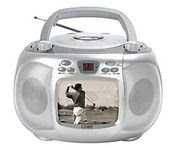..bmp)

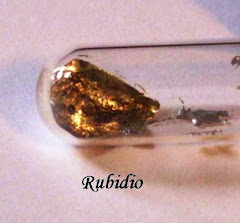


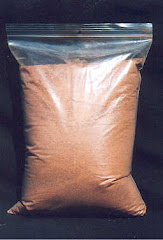..jpg)
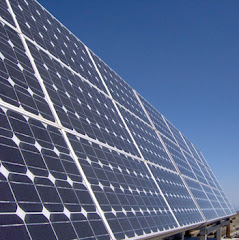..jpg)
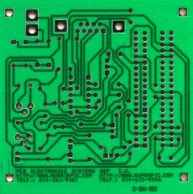
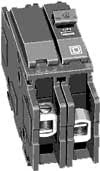
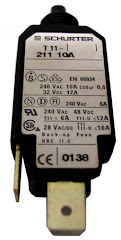

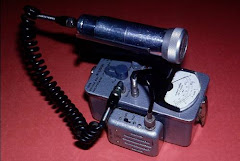


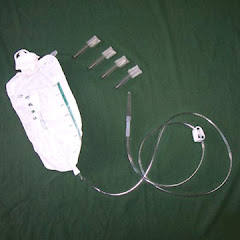.jpg)
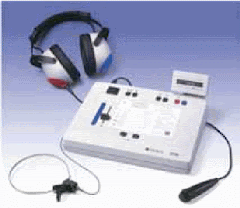.gif)
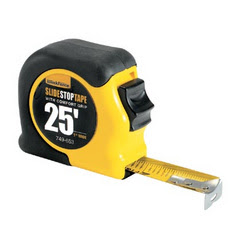.jpg)

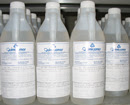
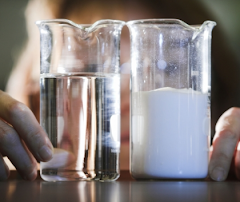
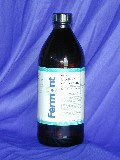

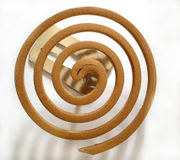

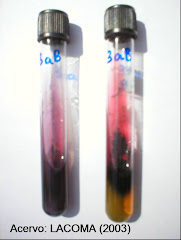
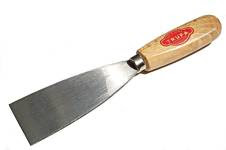
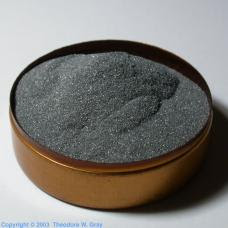..jpg)
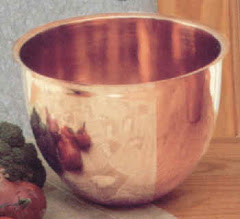
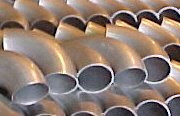+Stainless+steel+elbow.bmp)
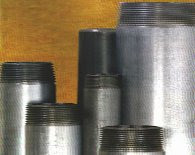
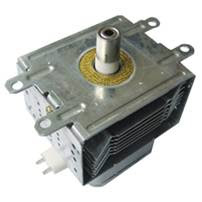
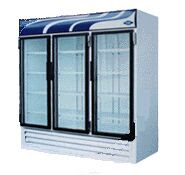
..jpg)
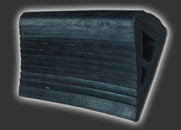
..jpg)

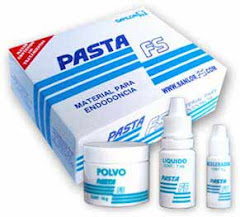..jpg)
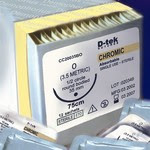



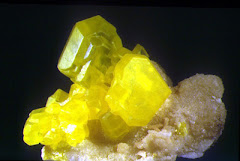
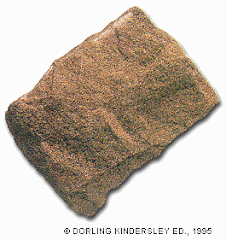
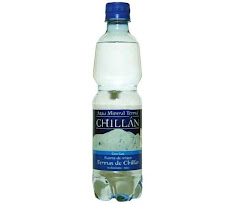
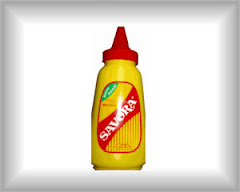

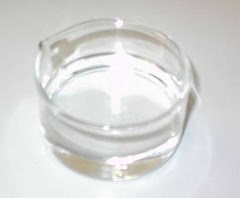

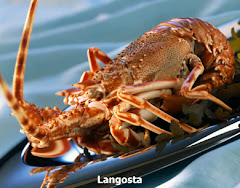
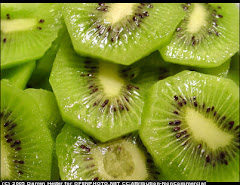


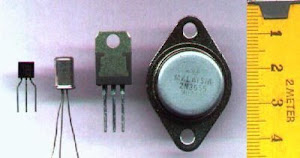
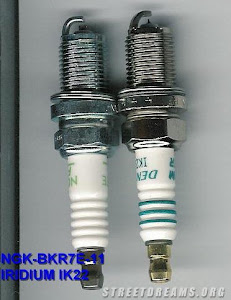


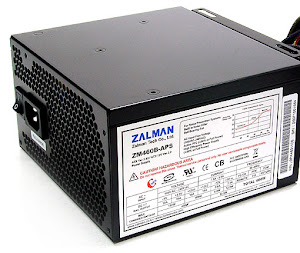..jpg)
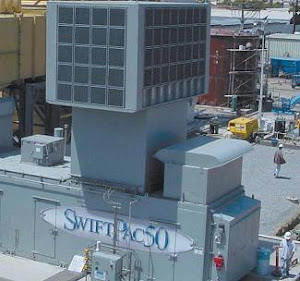..jpg)
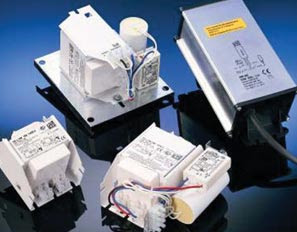
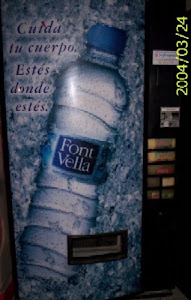
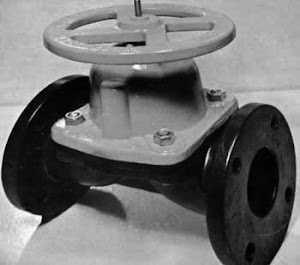..jpg)

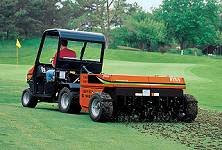
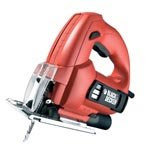

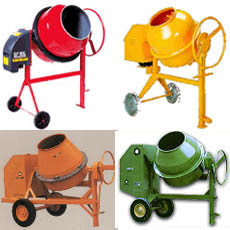
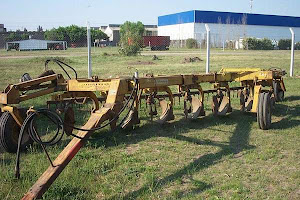
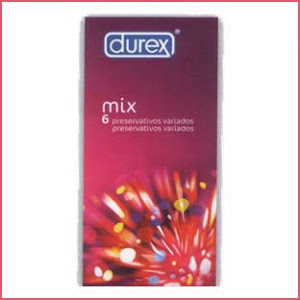
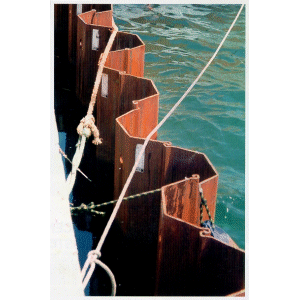Tablestacas..gif)

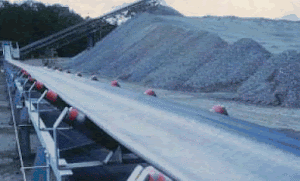.gif)
.bmp)
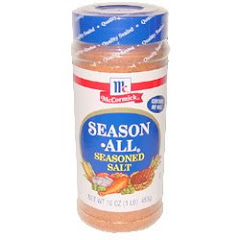
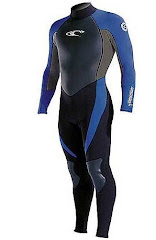

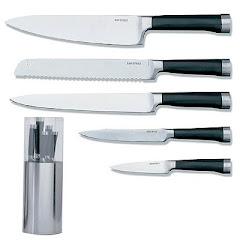
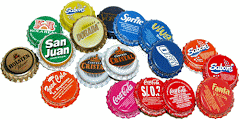


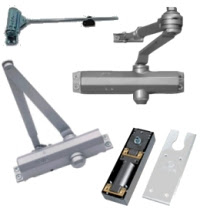
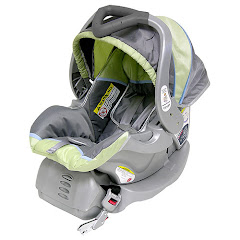
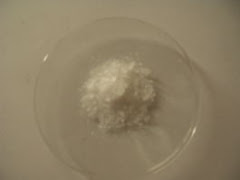
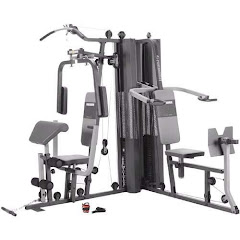
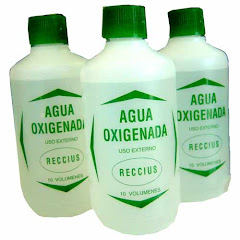..jpg)

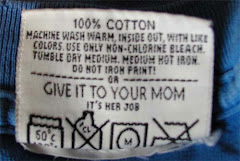
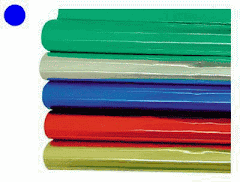
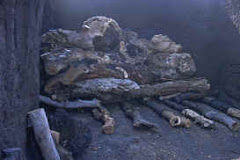.jpg)
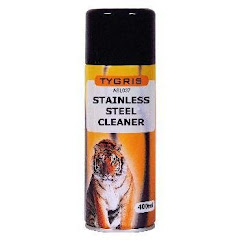
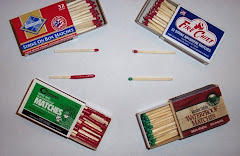
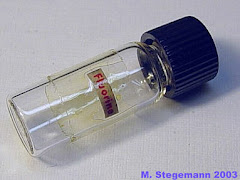
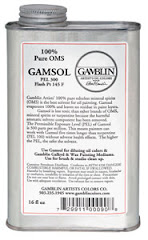..jpg)
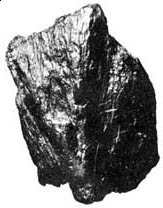
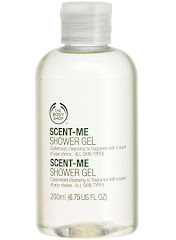
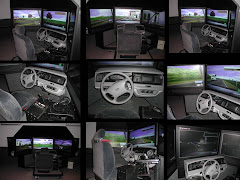
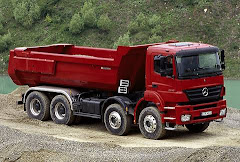.jpg)
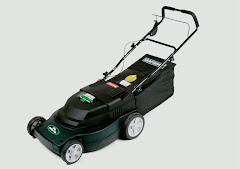
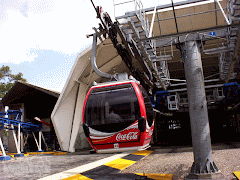
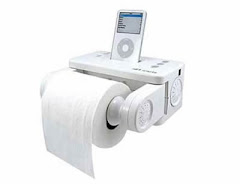
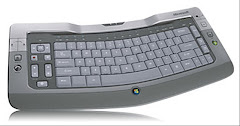
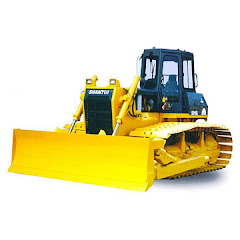..jpg)
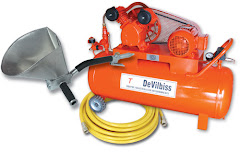
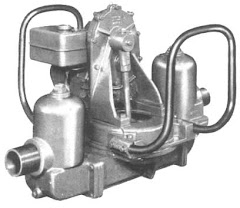

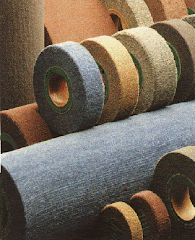.gif)

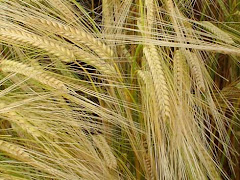
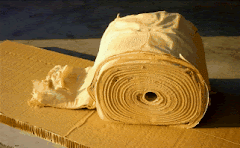

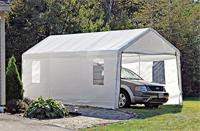..jpg)

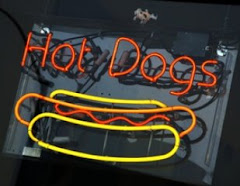

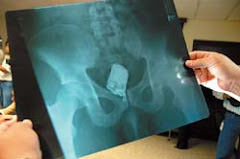
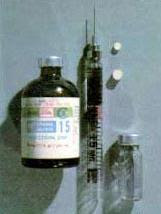
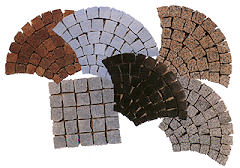
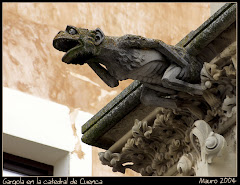
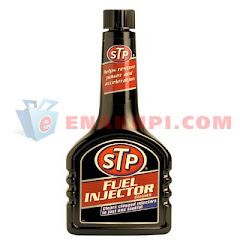
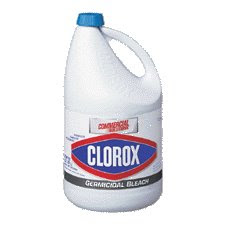



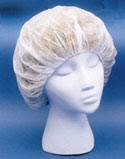

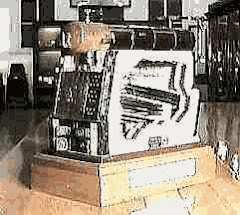
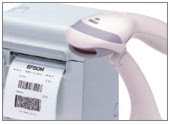
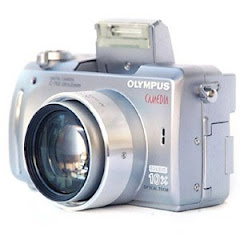
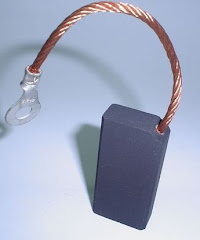
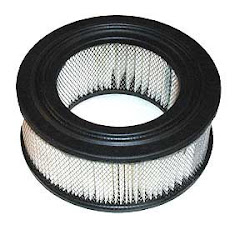
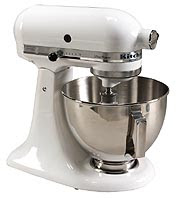

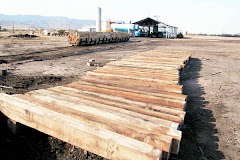+de+madera+para+vias,sin+impregnar.jpg)
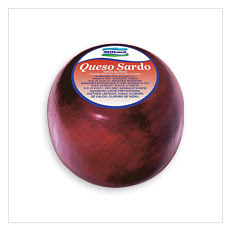
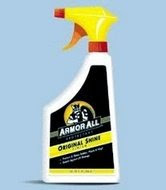
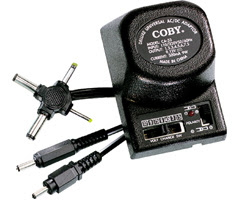




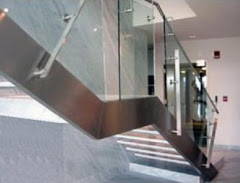
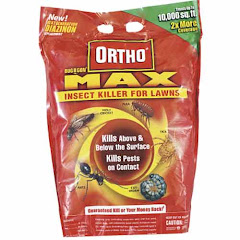..jpg)
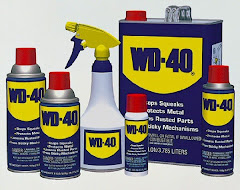
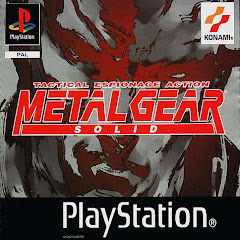
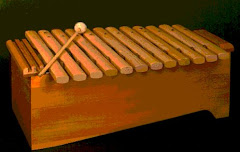
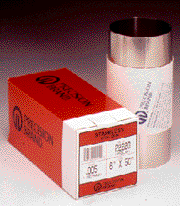.gif)
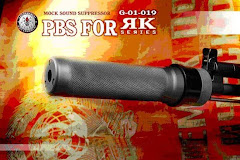
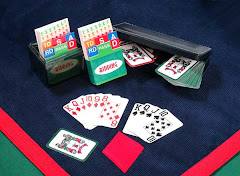
..jpg)
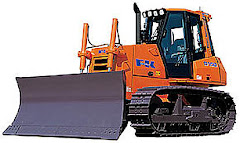+de+oruga.jpg)
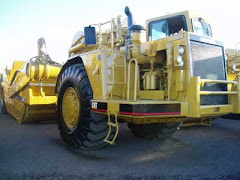
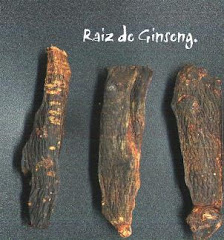
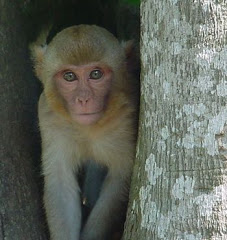
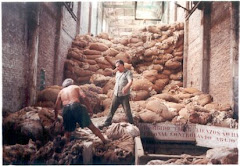
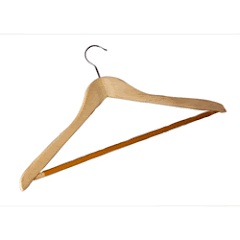
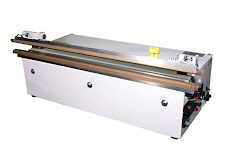
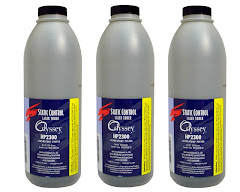
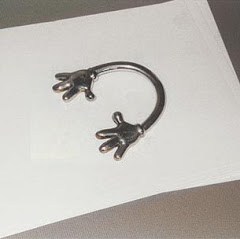

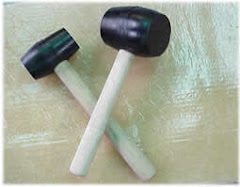
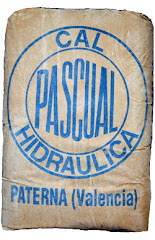



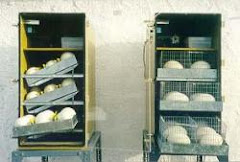

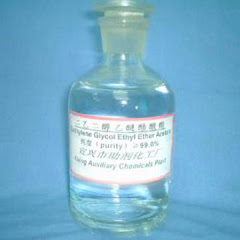
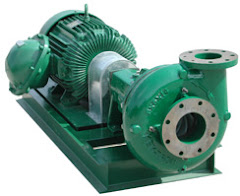
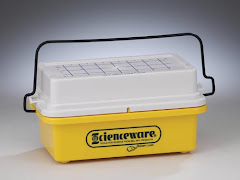+BEL-ART.jpg)
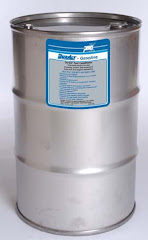
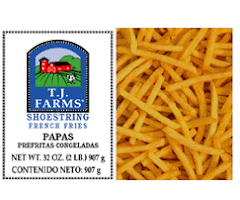
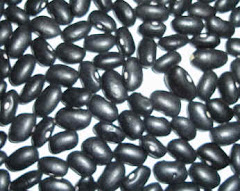
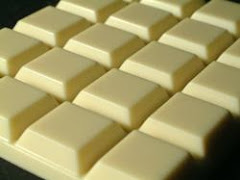
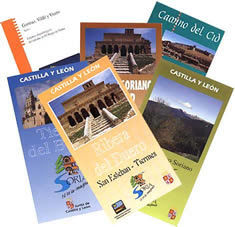


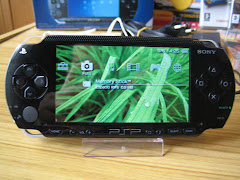

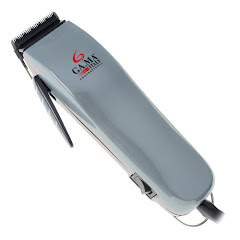

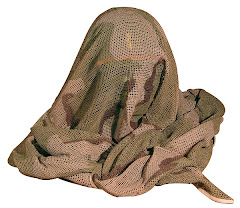.jpg)
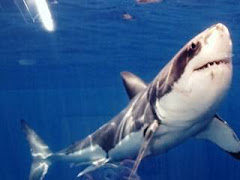..jpg)
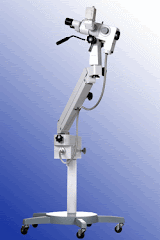.gif)
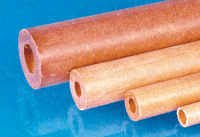..bmp)

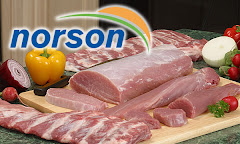
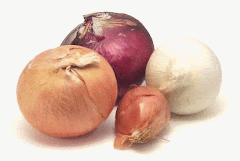
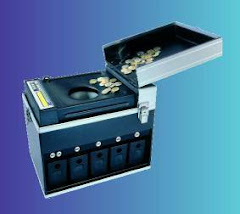
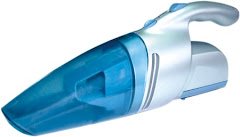
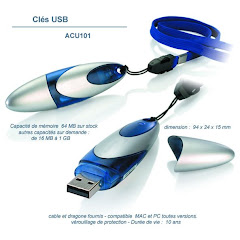.bmp)
